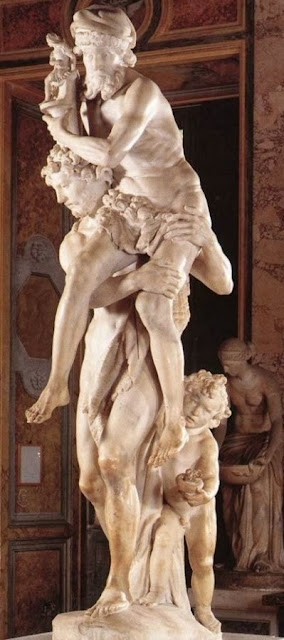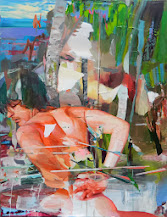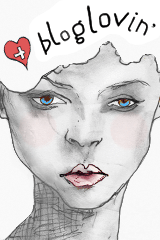Gian Lorenzo Bernini
0
Tra i
generi artistici la scultura mi affascina per la complessità delle sue tecniche
e l’abilità che richiede l’esecuzione.
Tra gli scultori del passato il mio preferito è sicuramente Gian Lorenzo
Bernini ( 1598 – 1680). Figlio di uno scultore, sin da giovanissimo ha
dimostrato di essere dotato di grande talento e di un forte temperamento. E’
stato il principale artista del Barocco e ha contribuito al rinnovamento in
chiave barocca dell’urbanistica della città di Roma, realizzando opere che
esprimono tutta la forza e il potere della Chiesa.
Between artistic genres sculpture fascinates me because of the complexity of his techniques
and skill that needs to be run. Among the sculptors of the past is definitely my favorite Gian Lorenzo Bernini (1598-1680).
The son of a sculptor, from a young age has proven to be very talented and a strong temperament. E 'was
the main artist of the Baroque and has contributed to
the renewal of urbanism in
a baroque city of
Rome, creating works that express all the strength and power of the Church.
Era giovanissimo quando entrò nelle simpatie del ricco e colto Cardinale Scipione Borghese, che notò le sue eccezionali qualità e la novità del suo stile fatto di particolari accurati e dettagliati, di personaggi ritratti in movimento e di una lavorazione del marmo come fosse una materia duttile e resa morbida con l’uso del chiaroscuro, ovvero dall’uso sapiente di luci ed ombre.
Scipione Borghese commissionò al Bernini quattro gruppi
scultorei, oggi conservati presso la Galleria Borghese e che introducono nella
scultura un elemento nuovo, ovvero la vita. “Enea e Anchise”, “Ratto di
Proserpina”, “David”, “Apollo e Dafne” rappresentano scene mitologiche e
personaggi Biblici come se fossero davanti a noi e qualcosa stesse accadendo
nel momento esatto in cui le si osserva. Le vita con la sua forza e la sua
violenza sembra uscire da queste opere dove i corpi sono contorti, i muscoli
sono tesi e le labbra sono sempre sul punto di emettere un urlo o un’ultima parola.
He was young when he entered the sympathies of the rich and cultured Cardinal Scipione Borghese, who noted its exceptional quality and the novelty of his style made of special accurate and detailed, moving portraits of characters and a marble working like a supple material and made soft with the use of chiaroscuro, or by the clever use of light and shadow. Scipione Borghese commissioned Bernini to four groups of sculptures, now housed in the Galleria Borghese in sculpture and introducing a new element, that of life. "Aeneas and Anchises", "Rape of Proserpine", "David", "Apollo and Daphne" depicting scenes from mythological and Biblical characters as if they were in front of us and something was happening at the exact moment in which it is observed. The life with his strength and his violence seems to come out of these works where the bodies are twisted, the muscles are tense and lips are always on the verge of issuing a scream or a last word.
“Enea e Anchise” (1618-1619) è il primo gruppo scultoreo
realizzato per il Cardinale e quello che probabilmente ha coinvolto
maggiormente il padre Pietro con i suoi consigli, essendo Gian Lorenzo poco più
che ventenne. Rispetto alle opere successive la forza e la vitalità sono meno
evidenti, ma già appare evidente l’abilità del Bernini nel modellare il marmo a
suo piacimento per differenziare la pelle dei personaggi rappresentati: molle e
raggrinzita per l’anziano Anchise, florida e turgida per Enea, liscia e morbida
per il figlio Ascanio.
"Aeneas
and Anchises" (1618-1619) is the
first group of sculptures made
for the Cardinal and what is probably the most
involved father Peter
with his advice, as Gian Lorenzo in his early twenties. Compared to the later works the strength and vitality are less obvious, but already it is clear the ability of Bernini in shaping the marble as he wished to
differentiate the skin of the
characters represented: soft and
wrinkled for the elderly Anchises, florid and turgid
for Aeneas, smooth
and soft for his son Ascanius.
Il “Ratto di Proserpina” (1621-1622) rappresenta il momento
culminante del rapimento di Proserpina da parte di Plutone. La ragazza tenta di
sfuggire alla presa del dio degli Inferi
e intuiamo la violenza e la forza dalle potenti mani che affondano nel
fianco e nella coscia della dea della fertilità. La ragazza non riuscirà a
sfuggire nonostante tenti con tutte le su forze di difendersi allontanando da
sè la testa di Plutone e il cane Cerbero
è lì ai piedi della coppia per assicurarsi che nessuno possa impedire che il
dio porti via con sé Proserpina.
Il “David” (1623-1624) rappresenta il corpo dell’eroe
biblico che si torce nel momento in cui sta per scagliare verso il gigante
Golia il sasso. I muscoli sono tesi, gli occhi fissi verso il bersaglio e
l’espressione del volto contratta. Tutto il corpo è impegnato in una rotazione
come fosse un antico discobolo e ponendosi davanti all’opera sembra di
diventare il bersaglio di tutta quella tensione.
The "David" (1623-1624) represents the body of the biblical hero
who twists the
moment is about to hurl a stone
towards the giant Goliath. The muscles are tense, his
eyes fixed towards the target and
the expression of his face contracted.
The whole body is involved in a rotation as if it were an
ancient discus thrower and
placing before the work seems
to become the target of all that tension.
Con “Apollo e Dafne” (1622-1625) Bernini mette in scena la
storia mitologica che vuole Apollo innamorato della ninfa Dafne, che sfuggendo
al dio che la rincorre si trasforma in una pianta di alloro nel momento stesso
in cui viene afferrata. I due protagonisti sono rappresentati nel momento
esatto in cui, correndo, inizia la trasformazione ed è come se il fotogramma
reale di quella vicenda si fosse fermato perché lo spettatore possa ammirare lo
smarrimento di Apollo e le urla di Dafne. In questo gruppo scultoreo l’elemento
scenografico e teatrale del Bernini trova la sua apoteosi e tutti diventiamo
spettatori di uno spettacolo tragico e mitico allo stesso tempo.
With "Apollo and Daphne" (1622-1625) Bernini depicts
the mythological story that wants
to Apollo in love with the
nymph Daphne, who escaped to the god who
chases turns into a laurel tree at the very moment in which it is grasped. The two main characters are represented in the
exact moment when, running, start the
transformation and it is as if
the real frame of that story had stopped because the viewer can see
the loss of Apollo and Dafne's screams. In this part of the scenery and the sculptural group by
Bernini theater finds its apotheosis and all
become spectators of a tragic spectacle and mythic
at the same time.































.jpg)








